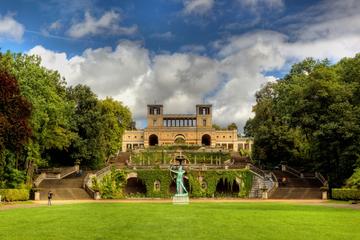Potsdams Gardens
TIME : 2016/2/22 11:03:05

Potsdam's Gardens
Potsdam acquired some importance when the Great Elector of Brandenburg Frederick William established his residence here, where a small garrison was housed from 1640 onward; the site's military function was strengthened by the young Prussian monarchy. Potsdam later changed under the power of Frederick II the Great, who wanted to establish a 'Prussian Versailles' next to the garrison town, which was to be his main residence. Landscape architect Peter Joseph Lenné united the various palaces and parks of Potsdam into a unique park landscape, and it was designated a World Heritage site by UNESCO in 1990.
Sanssouci Park, the most popular attraction in Potsdam, is the result of many influences from Italy, England, Flanders, Paris and Dresden. The 290-hectare park was laid out around several buildings including the Sanssouci Palace, the Orangery palace, the New Palace, the Charlottenhof Palace and the Roman Baths, while also hosting a magnificent botanical garden created in 1950. Some 4,600 different plant species from tropical and subtropical regions around the world are cultivated in more than 10 greenhouses, while about 4,000 different types of plants grow in the outdoor facilities along both sides of Maulbeerallee Street.
